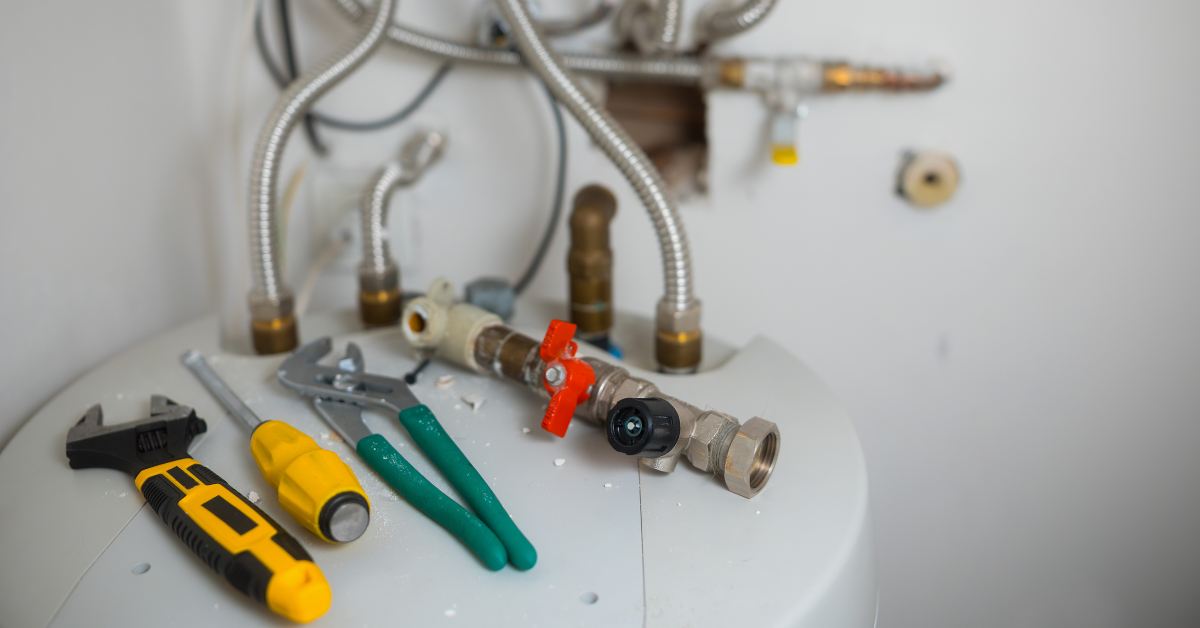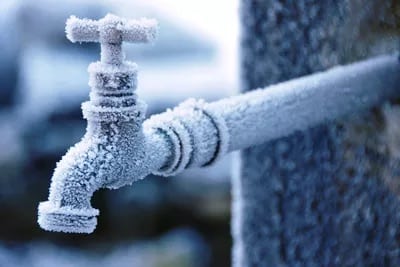Winter in Maryland always brings higher utility bills, and water heating is one of the biggest energy expenses for any household. With the right habits and a few smart upgrades, you can keep your tankless hot water heater or traditional unit running more efficiently and save more money each month. After 35+ years of serving homeowners across Pasadena and the surrounding area, I’ve learned what actually works—and what doesn’t. Let me walk you through some simple steps to protect your home, improve energy efficiency, and stretch your budget this winter.
1. Understand How Tankless Water Heaters Impact Energy Efficiency
Tankless water heaters transform how you use energy by heating water on demand. Unlike traditional storage tank models that constantly use energy to keep a large volume of water hot, a tankless unit activates only when you turn on a faucet. This process eliminates standby heat loss, a major source of wasted energy. As a result, you get a continuous supply of hot water without paying to heat water you aren’t using. For many households, switching to a tankless water heater can lead to significant savings on monthly utility bills while also reducing their home’s carbon footprint.
2. Lower the Temperature on Your Water Heater
Most water heaters are set to 140°F by default, but you can safely lower this to 120°F and still have plenty of hot water for daily needs. Reducing the temperature reduces standby heat loss and the amount of energy needed to maintain the set temperature. This simple adjustment can cut your water heating costs by up to 10% annually. Whether you have a gas, electric, or propane system, lowering the thermostat is a quick, free way to start saving immediately.
Schedule Service Online
Get a free estimate so you know what you're signing up for
"*" indicates required fields
For Emergency Services Call: 410-255-9300
3. Insulate Exposed Water Heating Pipes
Your water heater works hard to heat water, but much of that heat can be lost as it travels through exposed pipes, especially in unheated areas like basements or crawl spaces. This forces your unit to work harder and longer to deliver hot water to your faucet. By wrapping these pipes with inexpensive foam insulation, you can raise the water temperature by 2°F–4°F, allowing you to lower your water heater’s thermostat without sacrificing comfort. It’s a low-cost DIY project that pays for itself quickly.
4. Explore the Benefits of Upgrading to a New Water Heater
If your water heater is over 10 years old, it may be time to consider a replacement. Older units are less energy-efficient and more prone to costly repairs. Upgrading to a modern, high-efficiency model from brands like Rheem or A.O. Smith can provide immediate savings on your utility bills and reduce wasted fuel. Today’s water heaters offer better insulation, more efficient burners, and smarter controls, ensuring you get reliable performance without the high operating costs of an aging system.
5. Maintain Your Water Heater Parts Before Winter
Annual maintenance is key to preventing surprise breakdowns during the cold months. A professional tune-up involves flushing the tank to remove sediment buildup, which can hinder efficiency and damage the unit. A technician will also clean the burner, inspect gas or electrical connections, and check all water heater parts for wear and tear. This proactive care ensures your system runs safely and efficiently all winter long, extending its lifespan and keeping your energy bills in check.
6. Fix Leaks Fast to Avoid Wasting Money
A small drip from a hot water faucet may not seem like a big deal, but it can add up to a significant amount of wasted water and energy over time. A leak of just one drip per second can waste hundreds of gallons of hot water per year, driving up your utility bills. Beyond the financial cost, persistent leaks can lead to water damage and mold growth. Addressing leaks promptly is one of the easiest ways to conserve resources and protect your home.
7. Install Low-Flow Fixtures to Use Less Hot Water
You can reduce your hot water consumption by up to 60% without noticing a difference in performance by installing low-flow fixtures. Modern low-flow showerheads and faucet aerators are designed to mix air with water, maintaining strong pressure while using significantly less volume. This simple upgrade means your water heater has to produce less hot water, leading to direct savings on your energy bills.
8. Shorten Shower Times for Immediate Savings
One of the most effective ways to cut water heating costs is to use less hot water. For a family of four, cutting each person’s shower time by just a couple of minutes a day can lead to substantial savings over the course of a year. Try setting a timer or playing a favorite song to keep showers shorter. It’s a simple behavioral change that makes a big impact on your monthly budget without requiring any investment.
9. Consider Switching to a More Efficient Fuel Source
The fuel source for your water heater—natural gas, electricity, or propane—plays a large role in its operating cost. Natural gas is often the most affordable option, but its availability depends on your location. High-efficiency electric heat pump water heaters can be two to three times more efficient than standard electric models. Evaluating which fuel source offers the best long-term savings for your home is a smart step, especially if you’re already planning an upgrade.
10. Schedule a Winter Inspection Before the Temperature Drops
The last thing any homeowner wants is a water heater failure in the middle of a Maryland winter. Before the cold weather sets in, schedule a professional inspection of your tankless or traditional unit. A trained technician can spot potential issues, ensure your system is running at peak efficiency, and perform any necessary maintenance. This preventive measure provides peace of mind and helps you avoid the cost and inconvenience of an emergency repair.

Keep Your Home Comfortable and Your Bills Lower With MD Sewer and Plumbing
Saving on water heating doesn’t have to feel complicated. With a few smart changes and the right upgrades, you can enjoy dependable hot water all winter long. If you’re thinking about tankless heaters for continuous hot water or you want to make sure your current system provides enough hot water for your family, I’m here to help you sort through the different types, features, and products on the market.
My team works with top models and other brands so customers can choose what fits their home, their budget, and their goals. Whether you’re in a new home, tackling an older setup with stored water, or looking to lower emissions with a more efficient gas water option, we can guide you through every step. We keep the most trusted products in stock and walk consumers through what really matters before they purchase.
From installation and labor to ongoing maintenance, we make the entire process simple. You can visit us online anytime to explore your options, place an order, or find the right selection for your household. We’re proud to help Maryland residents meet their hot water needs with innovation, reliability, and honest service — not just in Nov, but year-round.
If you’re ready for better performance and lower bills, let us help you choose the right type of water heater and get the job done right.
Helpful Links and Resources for Hot Water Heater Tips and Plumbing Tips
Here are six valuable links and resources to help you learn more about plumbing inspections and maintaining your home’s plumbing system:
This Old House – Plumbing Projects and Ideas: Find practical guides and inspiring projects related to plumbing, from repairs to upgrades.
American Society of Home Inspectors (ASHI): Learn about standard home inspection practices, including plumbing inspection checklists and guidelines.
EPA WaterSense Program: Discover tips for improving water efficiency, identifying leaks, and upgrading to water-saving fixtures.
The Spruce—Plumbing Tips and Tricks: Provides a wealth of plumbing advice, including DIY maintenance tips and understanding common plumbing issues.
National Association of Plumbing-Heating-Cooling Contractors (PHCC): Explore resources from professionals dedicated to the improvement of plumbing, heating, and cooling systems.
Family Handyman—Plumbing Guides: Access detailed tutorials and expert advice on plumbing repairs and preventive maintenance.




